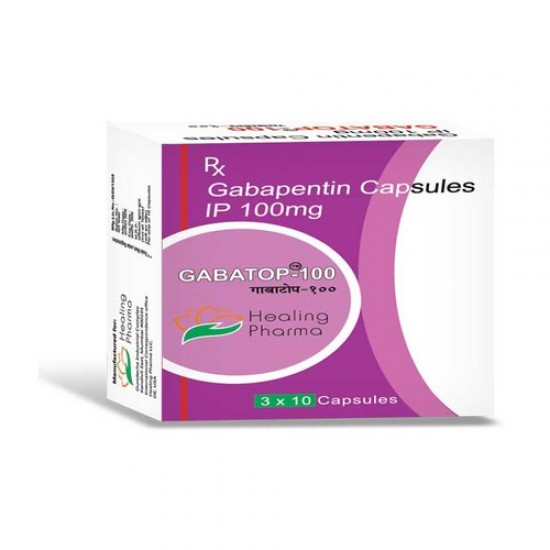Living with chronic pain or seizures can significantly affect your daily life. Fortunately, medications like Gabapentin 100 mg provide effective relief for many people dealing with nerve-related conditions. As a low-dose option, it allows patients to start treatment gradually and build tolerance. But what exactly does Gabapentin do, and is it right for you?
In this blog, we’ll explore how Gabapentin 100 mg works, what it treats, and what you should know before starting it.
What Is Gabapentin?
Gabapentin is a prescription medication that belongs to a class of drugs known as antiepileptic or anticonvulsant agents. It was originally developed to treat seizures but is now widely used to manage neuropathic (nerve) pain and several other off-label conditions.
The 100 mg dose is considered a low starting dose, ideal for introducing the medication to the body with fewer side effects.
Gabapentin is available under several brand names, including:
-
Neurontin
-
Gralise
-
Horizant (used mainly for restless legs syndrome)
What Is Gabapentin 100 mg Used For?
Gabapentin 100 mg is prescribed for a variety of conditions, including both FDA-approved and off-label uses:
1. Partial Seizures
Gabapentin is used as an adjunct treatment for partial seizures in adults and children over 3 years old. It helps reduce abnormal electrical activity in the brain.
2. Nerve Pain
Gabapentin is highly effective for treating chronic nerve pain caused by:
-
Diabetic neuropathy
-
Shingles (postherpetic neuralgia)
-
Sciatica
-
Spinal nerve compression
Unlike traditional painkillers, Gabapentin targets the nerves themselves, not just the pain signals.
3. Restless Legs Syndrome (RLS)
Gabapentin enacarbil, a prodrug of Gabapentin, is FDA-approved to treat moderate to severe RLS. Gabapentin 100 mg may be used off-label for similar symptoms.
4. Other Off-Label Uses
Many doctors prescribe Gabapentin for conditions not officially approved by the FDA, including:
-
Generalized anxiety disorder
-
Fibromyalgia
-
Insomnia
-
Migraine prevention
-
Hot flashes
-
Alcohol and drug withdrawal symptoms
These uses are backed by clinical research and real-world patient success.
How Does Gabapentin Work?
Gabapentin’s exact mechanism isn’t fully understood, but it’s known to bind to voltage-gated calcium channels in the brain. This action helps reduce the release of certain neurotransmitters, calming overactive nerve signals.
This effect helps prevent seizures, reduce nerve pain, and relieve uncomfortable neurological symptoms like those experienced in RLS or fibromyalgia.
Importantly, Gabapentin does not work like opioids or benzodiazepines, making it a safer alternative for chronic pain and neurological conditions.
Gabapentin 100 mg Dosage and Administration
Gabapentin 100 mg is typically prescribed as a starting dose. Your doctor may gradually increase the dosage depending on your response and condition. A typical dosing schedule might look like:
-
Day 1–3: 100 mg once or twice daily
-
Week 2 onward: Dose may increase to 300–900 mg/day or more
Gabapentin is usually taken 3 times a day, but this can vary.
Tips for taking Gabapentin:
-
Take at the same time each day
-
You can take it with or without food
-
Swallow the capsule whole with water
-
Do not skip doses or stop suddenly
What Are the Side Effects of Gabapentin 100 mg?
Most people tolerate Gabapentin well, especially when starting with a low dose like 100 mg. However, side effects can occur, especially during the first few weeks.
Common Side Effects:
-
Drowsiness
-
Dizziness
-
Fatigue
-
Swelling in hands or feet
-
Difficulty concentrating
-
Nausea
These are usually mild and temporary.
Serious Side Effects (Less Common):
-
Suicidal thoughts or mood changes
-
Breathing difficulties (especially when taken with opioids)
-
Allergic reactions (rash, itching, swelling)
-
Severe confusion (more common in older adults)
Seek medical attention if you notice serious or unusual symptoms.
Safety Considerations
Before starting Gabapentin, tell your doctor if you have:
-
Kidney problems
-
A history of depression or mental health issues
-
Drug or alcohol use
-
Any allergies to medications
Important Warnings:
-
Don’t stop suddenly: Doing so may lead to seizures or withdrawal symptoms.
-
Avoid alcohol: It increases the risk of side effects like dizziness and drowsiness.
-
Don’t double your dose if you miss one — just take the next dose as scheduled.
Interactions with Other Medications
Gabapentin may interact with certain medications, including:
-
Opioids – Increases risk of breathing problems
-
Antacids (e.g., aluminum or magnesium) – May reduce absorption; take Gabapentin 2 hours apart
-
Other sedatives – May increase drowsiness and coordination issues
Always inform your doctor and pharmacist of all medications you take, including over-the-counter drugs and supplements.
Is Gabapentin 100 mg Right for You?
Gabapentin 100 mg is an effective option for people seeking relief from nerve pain, seizures, or related conditions. Starting at a low dose helps reduce side effects and gives your body time to adjust.
It’s not a cure, but for many, Gabapentin improves sleep, reduces pain, and enhances daily function — especially when paired with a full treatment plan including physical therapy or lifestyle changes.
Final Thoughts
Gabapentin 100 mg has proven to be a reliable and well-tolerated medication for a range of neurological conditions. Whether you’re managing nerve pain, seizures, or another condition, this medication can be a helpful tool under proper medical supervision. Always take it exactly as prescribed and report any concerns to your healthcare provider.
